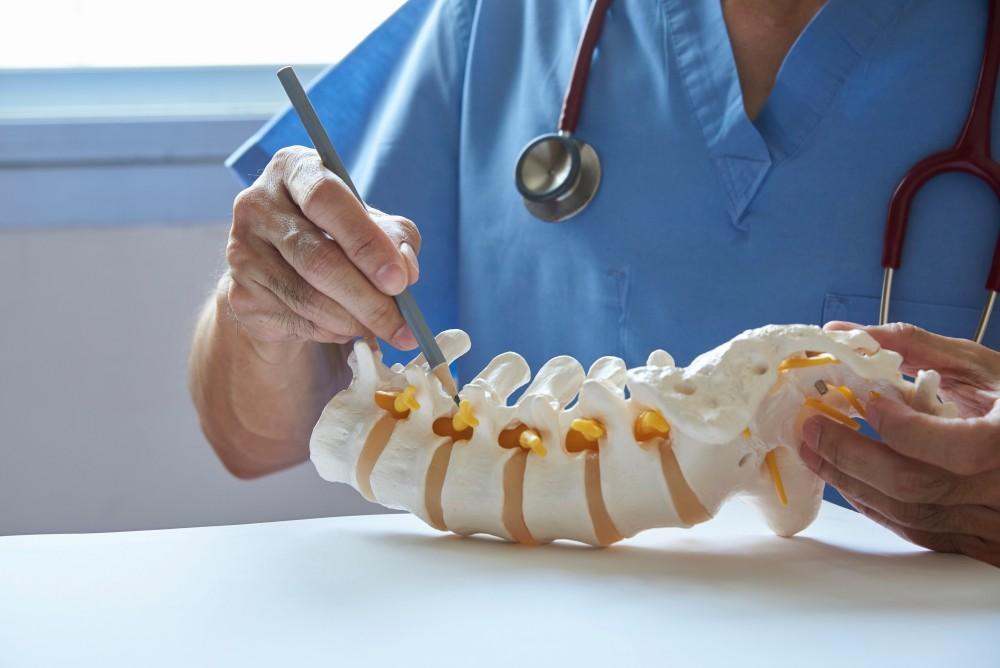
A Closer Look at Your Sacroiliac Joint

The sacroiliac (SI) joints connect the sacrum at the base of the spine to the hip bone on either side, providing the necessary strength to balance the powerful forces between the upper and lower parts of the body. These joints also protect the lowest part of the spine, vertebrae L5-S1, by restricting its motion, holding it in place with very strong ligaments. All this permits stable but flexible support for the upper body.
At Vertrae®, board-certified neurosurgeon Dr. Kamal R. Woods and his team treat spine problems, including the sacroiliac joints. If you have pain or other symptoms in this area, Dr. Woods can diagnose and treat the problem at our offices in Dayton and Springfield, Ohio.
More about the SI joint structure
The outer portion of the SI joint is covered by a capsule composed of thick, tough, membranous tissue. The inner portion of the capsule has a delicate lining called the synovial membrane. This membrane secretes synovial fluid into the joint space, helping to lubricate the various moving parts.
A fully developed adult sacroiliac joint is structured like two C-shaped (or inverted L-shaped) layers of bone with several irregular ridges and depressions.
Each C's outer (convex) part corresponds to the hip’s ilium bone and is covered with thick hyaline cartilage. Each C's inner (concave) part corresponds to the fused sacral bones S1-S3, whose surface is lined with thin fibrocartilage. Both types of cartilage develop a coarse texture as part of a natural adaptation to stress.
The joint surface can be divided into three distinct regions corresponding to the sacral vertebrae. The region near S1 is the largest, and near S3 is the smallest.
The angle and texture of the connecting surfaces change slightly as you age to overcome compression in this region and to allow the joint to accommodate more force. The ridges and depressions along the surfaces develop and deepen with age. There are two main changes:
- The joint’s stability is increased
As an individual begins early adulthood, the ligaments are the primary structures that ensure the joint’s stability. In adulthood, you see increased bony interlockings on the joint surface to enhance stability.
- The joint’s mobility is decreased
As you age, the movement of the SI joint decreases, and by a person’s 80s, movement is generally minimal.
As the joint ages, too, the space between the bones narrows. That makes treatments, such as SI injections, more challenging.
If the joint moves more or less than it should because of an underlying problem and causes symptoms, it may be termed sacroiliac joint dysfunction.
The functions of the SI joint
The sacroiliac joints provide a number of essential functions:
- Support the upper body’s weight
- Control and distribute the forces coming from the upper body into the legs
- Act as shock absorbers for the spine and control the transmission of forces from the lower body into the spine, such as during standing or walking
- Allow walking, movements of the spine and thigh, and changes in posture or position
- Facilitate pregnancy and childbirth by widening and becoming more mobile
Pain signals in this region arise from within the joint and surrounding ligaments. These nerves also provide you with knowledge of your position and balance.
When the SI joint becomes dysfunctional
Sacroiliitis is a common problem of the SI joints. The inflammation causes pain in your lower back, buttocks, and/or legs.
Lower back pain is the most common sacroiliitis symptom. The pain might:
- Get worse after sitting or standing in one position for a long time
- Get worse when you rotate your hips
- Feel like a dull ache that suddenly becomes sharp and stabbing
- Radiate (spread) from the lower back into the buttocks and legs
Unlike regular morning stiffness, the stiffness from sacroiliitis usually lasts for over an hour every time you wake up.
Anything that leads to joint inflammation can cause sacroiliitis. Two forms of arthritis are the most common reasons for SI joint dysfunction:
- Ankylosing spondylitis: affects the joints in your spine; sacroiliitis may be an early symptom of the condition
- Psoriatic arthritis: a combination of psoriasis and arthritis that causes arthritis symptoms in your joints and psoriasis (scaly, flaky patches) on your skin
If you don’t treat the pain from sacroiliitis soon enough, it can affect your ability to move. Untreated pain can also lead to sleep disruptions and mental health problems like depression.
If you’re experiencing pain in your lower back, especially if it travels into your leg, you may have SI joint dysfunction. Vertrae® can help. To schedule an evaluation with Dr. Woods, call our office at 844-255-2225 or book online today.
You Might Also Enjoy...


How to Alleviate Chronic Back Pain Without Surgery

5 Common Signs of a Compression Fracture

Using Your Own Platelet-Rich Plasma to Alleviate Your Back Pain

4 Benefits of Outpatient Spine Surgery

